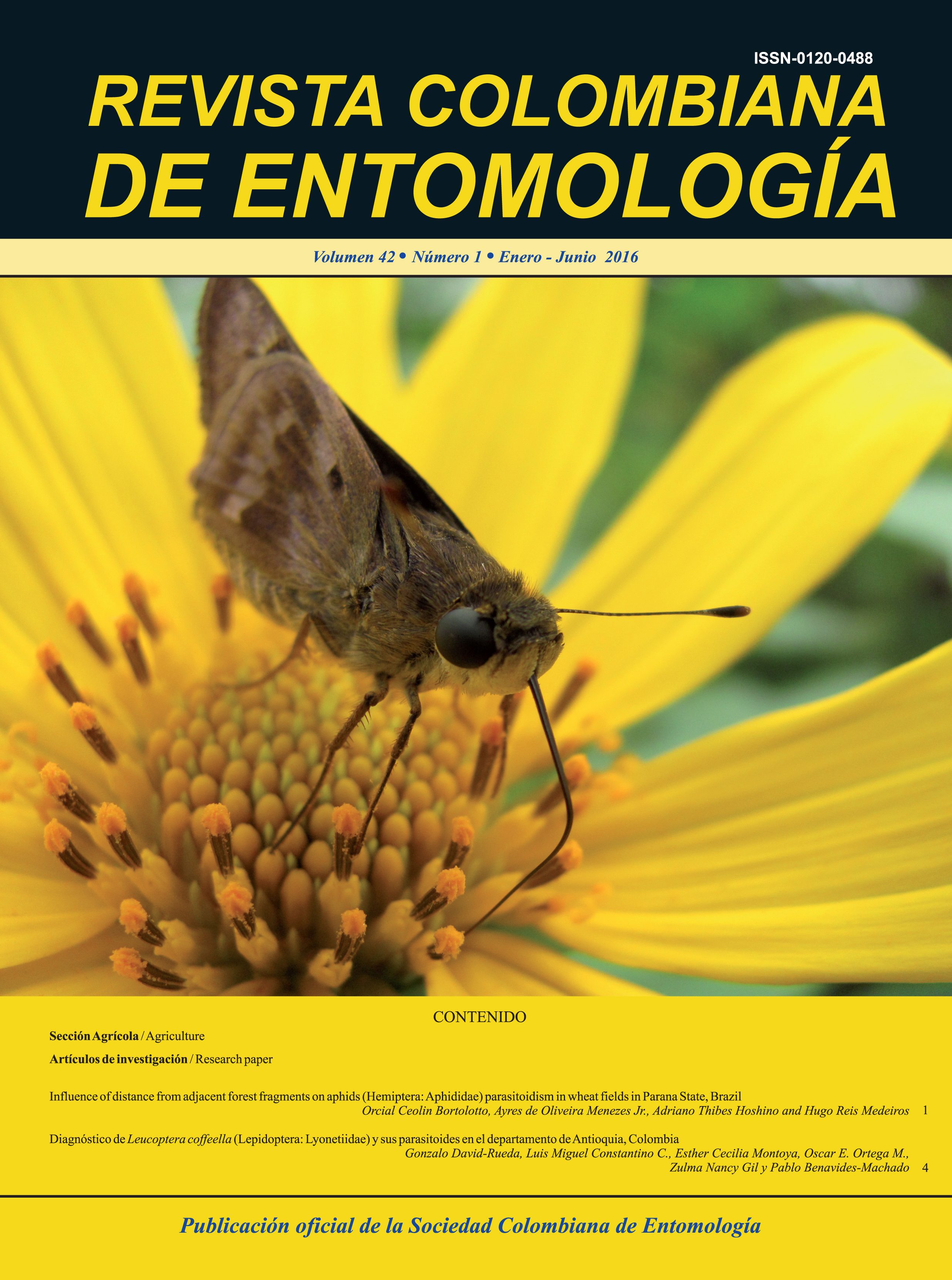Diagnostic of Leucoptera coffeella (Lepidoptera: Lyonetiidae) and its parasitoids in the department of Antioquia, Colombia
Keywords:
Coffea arabica, Natural enemies, Coffee leaf miner, Natural control, Conservation biological controlMain Article Content
Coffee Leaf Miner, Leucoptera coffeella is one of the main insect coffee pests in the Neotropics, causing yield decreases up to 80%, in countries such as Brazil. In Colombia, this insect pest has been poorly studied, since the damage it causes has been sporadic. This exploratory investigation was carried out in order to diagnose the damage caused by the coffee leaf miner and its parasitoids in the department of Antioquia. Pest infestation levels were evaluated as to incidences of natural parasitism, identifying the species of the parasitoids, through a bietapic sampling performed in more than 1,100 coffee crops between the ages of 2 and 5 years. Sixty (60) coffee trees per crop were evaluated four times through systematic sampling between 2013 and 2014. The results indicated an average of leaf miner infestation level under 2%, and parasitism levels between 58 and 89 %. In total, 787 parasitoid individuals emerged, all belonged to the Order Hymenoptera, family Eulophidae, comprising two subfamilies: Eulophinae and Entodininae. Seven parasitoid species were identified: Closterocerus coffeellae, Closterocerus lividus, Zagrammosoma multilineatum, Pnigalio sarasolai, Horismenus sp., Horismenus n. sp., and Apleurotropis n. sp. These last two new species for Colombia, and perhaps for science. The most abundant natural enemy of coffee leaf miner was the species C. coffeellae. The management of this insect pest by means of a conservation biological control strategy is recommended.
Downloads

This work is licensed under a Creative Commons Attribution-NonCommercial-ShareAlike 4.0 International License.
Authors retain the copyright on their work and are responsible for the ideas expressed in them. Once a manuscript is approved for publication, authors are asked for a publication license for the term of legal protection, for all territories that allows the use, dissemination and disclosure of the same.

